Home » Blog » Emergency Repairs » Run Flat Tyres: Everything You Need to Know
Have you been offered run flat tyres for your car and want to know the pros and cons? Maybe you’ve just heard of them and you’re interested to know more about how run flat tyres work, what maintenance they require, and if they’re actually worth the extra money you’ll pay for them. If so,check out our complete guide below.
Run flat tyres are designed to remain safe and functional for a limited time with no air pressure. That means, in the event of a puncture, you can continue driving for around fifty miles without having to change the tyre — which could be enough to get you home, or to a garage.
Unlike conventional tyres, which require air to stay hard, run flat tyres have a reinforced sidewall, meaning they stay rigid without any air pressure.
The reinforced outer shell of run flat tyres keeps the rubber in place without air, supporting the car as you continue your journey. However, the sidewall isn’t designed to be permanent, and is only recommended for around 50 miles of additional driving after the tyre has deflated.
All cars that are compatible with run flat tyres have a tyre pressure monitoring system (TPMS), which is designed to alert the driver in the event of loss of air pressure. Without a TPMS system, it would be almost impossible to detect a puncture, given that run flat tyres will continue to work even when they’re deflated.
Most TPMS systems display an alert on the centre console, reminding the driver that they should stop driving after 50 miles and seek a tyre repair or replacement.
Generally, run flat tyres use the same rubber compounds as conventional tyres, so you can expect similar longevity. Despite their reinforced components, run flats will wear at the same rate as standard tyres, and require the same level of care and maintenance.
To keep your run flat tyres in good condition, check their pressure, depth and condition every fortnight. This will ensure you get maximum life out of your tyres before having to replace them.
Run flat tyres aren’t repairable. That’s because, once they’ve been driven on, they lose their structural integrity, making them unsuitable for puncture repair. If they are patched up, it’s highly likely they’ll puncture again down the line due to uneven wear and loss of rigidity.
And that’s their biggest drawback compared to conventional tyres, which can often be repaired reasonably cheaply after a puncture (provided the hole isn’t in the sidewall). Given the expense of buying run flat tyres in the first place, each puncture could end up costing a small fortune.
Given the expense of buying run flat tyres in the first place, each puncture could end up costing a small fortune.
In a word, yes. Because run flats aren’t widely available, they tend to be a lot more expensive than ordinary tyres and can only be fitted to certain cars — putting them beyond the price point of the average motorist. Couple that with the fact they can’t be repaired, and they won’t make a whole lot of sense for most drivers.
If you don’t fancy paying through the nose for a car with run flat tyres, Holts Tyreweld Emergency Puncture Tyre Repair offers the next best thing. In the event of a puncture, this innovative DIY product quickly seals and re-inflates your tyre — allowing you to get to a garage without having to mess around with a spare wheel.
To find out more about our DIY car care range, visit our homepage.
Every car owner is likely to get a flat tire at some point. Hence, car manufacturers now offer cars with run-flat tires.
Hence, car manufacturers now offer cars with run-flat tires.
That said, it’s tricky to know the distance you can travel with a run-flat tire.
Are you wondering how long your run-flat tires will last?
This guide answers that question and more.
How many miles do run-flat tires last?Most common run-flat tires may do at least a fifty miles distance when the tire is flat. It depends on the brand of your tire and how badly damaged your tire is. When not damaged, run-flat tires will last as long as other tires which is normally 30,000 -70,000 miles.
Table of Contents
A run-flat tire can run flat for a limited time with no air pressure.
That means it is possible to drive your car with a flat tire still. Although, you wouldn’t be able to drive it at an average speed.
For example, if you use a tire brand like Bridgestone, run-flat tires will allow you to continue driving for up to 50 miles. But you will only travel at 50 mph speed. Sometimes even at a lesser speed.
But you will only travel at 50 mph speed. Sometimes even at a lesser speed.
The fifty miles distance can be enough to get you to the next garage or to a safe spot where you can get help. Otherwise, you may need to stop your car and try to get help.
If you have never used run-flat tires before, check your driver’s manual. It should contain all the information you will need about run-flat tires.
How many years do run-flat tires last when not used much?Your run-flat tire can be functional for a limited time. The number of years you can continue to use a run-flat tire will vary from brand to brand.
If you don’t use your run-flat tires much, they can last you 3 to 5 years. Of course, that will depend on where you store the tires. Or how you take care of them.
We’ve got some tips that you can use to keep your run-flat longer.
 This will enable you to know what distance you will be able to drive and at what speed.
This will enable you to know what distance you will be able to drive and at what speed.Like any other tires, you can’t keep run-flat tires for more than ten years on your car. Once they exceed ten years, you need to replace them.
We have a dedicated article on run-flat tire brands.
Go here to see a good overview of all the most-respected run-flat tires companies.
You’ll see that there are many big brands to choose from and today most of the bigger and more well-known tire brands have a line of run-flat tires as well.
Do run-flat tires last longer than other types?Generally, run-flat tires don’t last longer than conventional tires. Most run-flat tires can wear out quite quickly.
A run-flat tire has a thicker, stiffened sidewall that allows the car to carry the load should it goes flat. It will typically be stiffer when you inflate a run-flat tire than the ordinary tire.
This research has found that drivers who use run-flat tires replace their tires 6,000 miles sooner than those using standard tires.
Here is why: A soft tread compound inside every run-flat tire wears out quickly.
Blowouts are another issue that reduces the lifespan of run-flat tires. So, when you use run-flats, you should also expect blowouts.
So, when you use run-flats, you should also expect blowouts.
Especially if you drive your car with old run-flat tires, or don’t heed warning signs.
A run-flat tire may begin to disintegrate slowly.
Most of the time, without warning. Expect this if you don’t take good care of it. Or if you use a repaired run-flat tire for too long. Remember, when the puncture happens to a run-flat tire, it occurs on the sidewall in most cases.
Are run-flat tires worth the price?Run-flat tires are worth the price if you consider that they won’t leave you stranded on the side of the road. Besides, when you use run-flat tires, you don’t need to have a spare wheel.
Still, run-flat tires are more expensive than conventional tires. On average, you will pay one-third more for run-flat tires. If you consider that run-flat tires don’t last long, you may feel they are not worth that price tag.
Any catastrophic tire failure may leave you without a spare wheel. Plus, you will pay more to replace or repair your run-flat tires.
Plus, you will pay more to replace or repair your run-flat tires.
Most tire experts don’t recommend repairing run-flats:
If you decide to replace the run-flats with conventional tires, it’s okay.
You can use your existing rims. As long as they fit correctly, conventional tires will work just fine.
How do run-flat tires rate?Run-flat tire’s speed rating shows the acceptable speed that the tire can safely handle over time.
For instance, Bridgestone run-flat tires will still go, even after the tires loses some or all inflation pressure.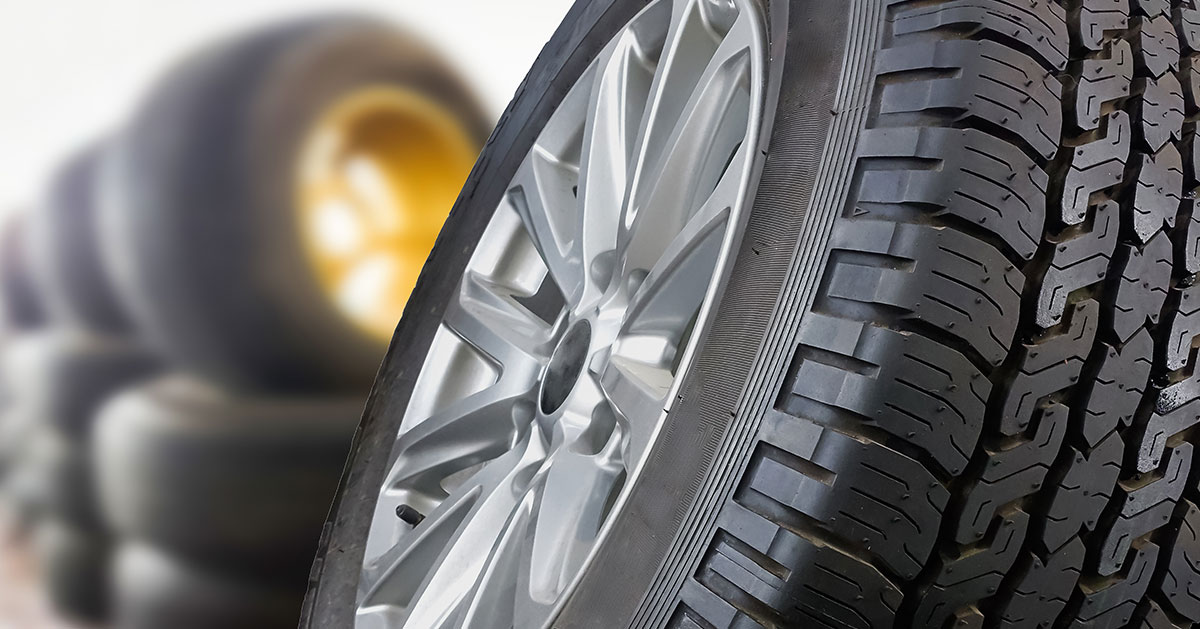 The Bridgestone will travel for up to 50 miles at a maximum speed of up to 50 mph.
The Bridgestone will travel for up to 50 miles at a maximum speed of up to 50 mph.
The higher you go beyond the recommended speed, the less are the chances of controlling your car.
Are run-flat tires good on the highway?You can drive on the highway with inflated run-flats.
But your run-flat tire should have certain features. Otherwise, you won’t enjoy driving with inflated run-flats on the road.
First, make sure that the tire has multiple sipes and deep lines. These sipes will allow your run-flat tires to have a hundred percent contact with the surface in all weather conditions.
A perfect run-flat tire should also have irregular tread block patterns. The patterns will give your car optimum tire performance on the highway.
A great run-flat tire should also have potent rubber compounds.
Inflating run-flats work the same as conventional tires. Hence, it’s crucial to maintain air pressure on your run-flat tires. You have to find an air compressor hose and a power source for that hose. Then connect it directly to the valve stem of your tire.
You have to find an air compressor hose and a power source for that hose. Then connect it directly to the valve stem of your tire.
With fully inflated run-flat tires, you can go as fast as you like on the highway.
However, once you get a puncture on your run-flats, you won’t be able to go beyond 50 mph.
Just because tire manufacturers recommend that you can go as fast as 50 mph, that doesn’t mean you should. Some cars may begin vibrating or making strange noises when you try to increase speed. You won’t always enjoy driving your car on the highway with run-flat tires.
Final ThoughtsThere are certain things you need to keep in mind about using run-flat tires. First, only a car with a TPMS or tire pressure monitoring system should have run-flats. This system will alert you when you have a puncture.
This way, you will know that you have a limited time to replace your run-flat tire. Otherwise, your car should use regular tires.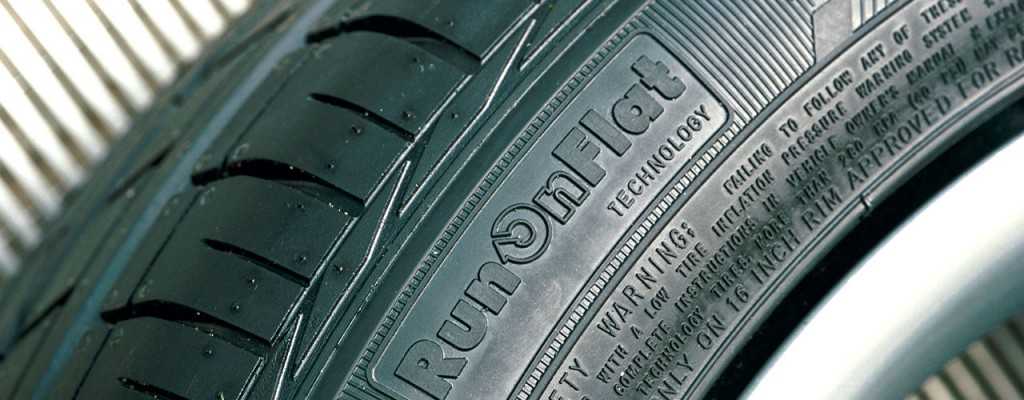
Secondly, you may need to consider changing your vehicle’s suspension before installing run-flats.
Your suspension components like bolt joints, control arm, and coil spring need to be good.
Run-flat tires have a stiffer construction that will take a toll on your tires. So your suspension should be in shipshape.
Old run-flat tires are dangerous for you and other drivers, too. It would help if you always replace your old tires, regardless of tread depth. If your car needs new run-flat tires, don’t settle for old tires because they are affordable.
Was this article helpful?
Great!
Click to share...
Did you find wrong information or was something missing?
We would love to hear your thoughts! (PS: We read ALL feedback)
Name (not required)
Email (not required)
Message
90,000 here are you yourself (and you can’t) - the magazine for the wheel ofLADA
UAZ
KIA
Hyundai
Renault
Toyota
Volkswagen
Skoda
Nissan
BM -Benz
Mitsubishi
Mazda
Ford
All brands
Most often, we ourselves are to blame for the fact that tires become unusable. But this can be avoided.
But this can be avoided.
Related materials
You have never seen such tires: even the police were surprised
In the process of using a tire, a variety of damages can occur, most of which are the fault of the driver. As a result, rubber is wasted, and since the law prohibits the use of different tire models on the same axle, you have to spend money on replacing the second tire.
The most common damage is puncture . This is the most harmless type of damage, but only if you notice it in time and repair it right away. It is absolutely impossible to drive on a flat tire, even a couple of meters! The damage caused by running on a flat tire or with low pressure is catastrophic. This causes the sidewalls to deform more than they should, which causes the tire to overheat, delaminate, and the carcass becomes unusable due to broken cords. As a result, the tire will have to be thrown away. In addition, the edge of the rim can also be damaged.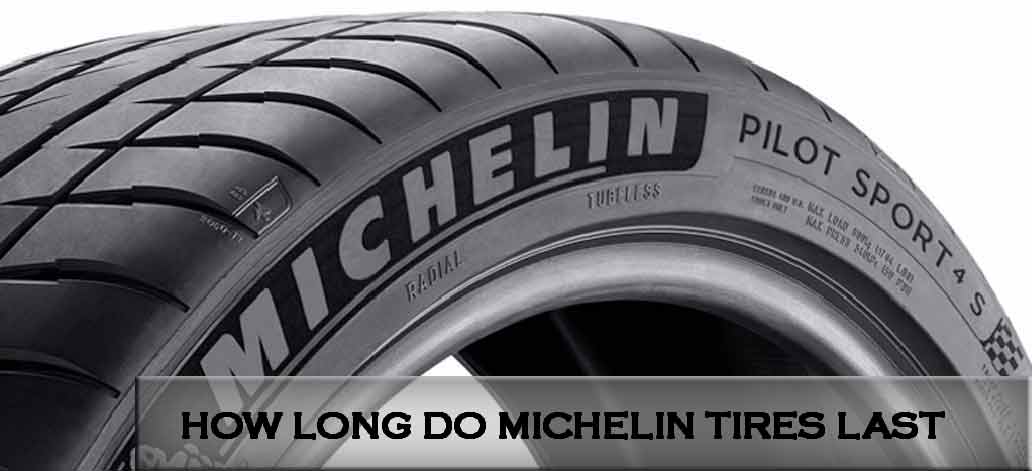
Punctures are of two types: with and without cord damage. To determine this, it is necessary to remove what pierced it. If the edges of the puncture tightly converge, then the cord is not damaged and it will be possible to repair the tire without removing it from the disk. Otherwise, if the edges do not converge, you will have to disassemble the wheel and make repairs with strengthening the frame from the inside. Alternatively, in the field and in the absence of a spare wheel, such a puncture can be repaired without removing the tire from the rim, after which you can carefully drive to a tire fitting or garage and make a full repair.
Related materials
Is it possible to pump up a wheel without a compressor - the experiment "Behind the wheel"
When repairing, the puncture site should be cleaned and marked. Further, it all depends on what kind of repair kit you have - as a rule, instructions are attached to them. There are sealants that are poured into the tire through the nipple, after which the wheel turns with the puncture down and the substance seals the hole.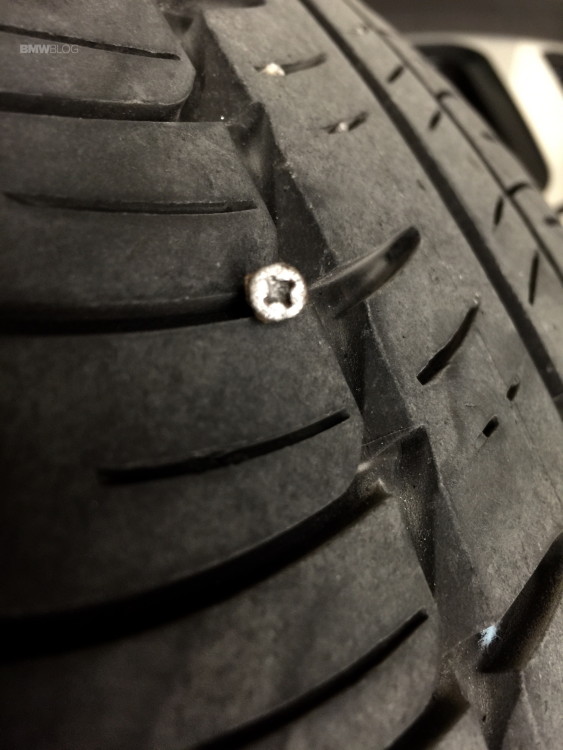 Repair using a tourniquet or insert is somewhat more complicated, but also more durable: the edges of the hole are polished with a special tool, after which the tourniquet treated with a special compound must be inserted into the tire through a puncture with a special awl, pulled out (not completely) out and cut flush with the surface.
Repair using a tourniquet or insert is somewhat more complicated, but also more durable: the edges of the hole are polished with a special tool, after which the tourniquet treated with a special compound must be inserted into the tire through a puncture with a special awl, pulled out (not completely) out and cut flush with the surface.
In case of damage to the cord due to a puncture, the tire must be removed from the rim in order to install a reinforced patch with an additional cord on its inner surface. One of the sides of such patches has an adhesive layer that promotes cold vulcanization. After such a repair, wheel balancing will be required. To seal punctures from the inside, patches in the form of a mushroom are also used, with a leg that goes into the puncture. Such patches are also covered with a special adhesive for cold vulcanization.
Cuts or holes , unlike punctures, are not repairable, as they violate the integrity of the frame, which can no longer be strengthened.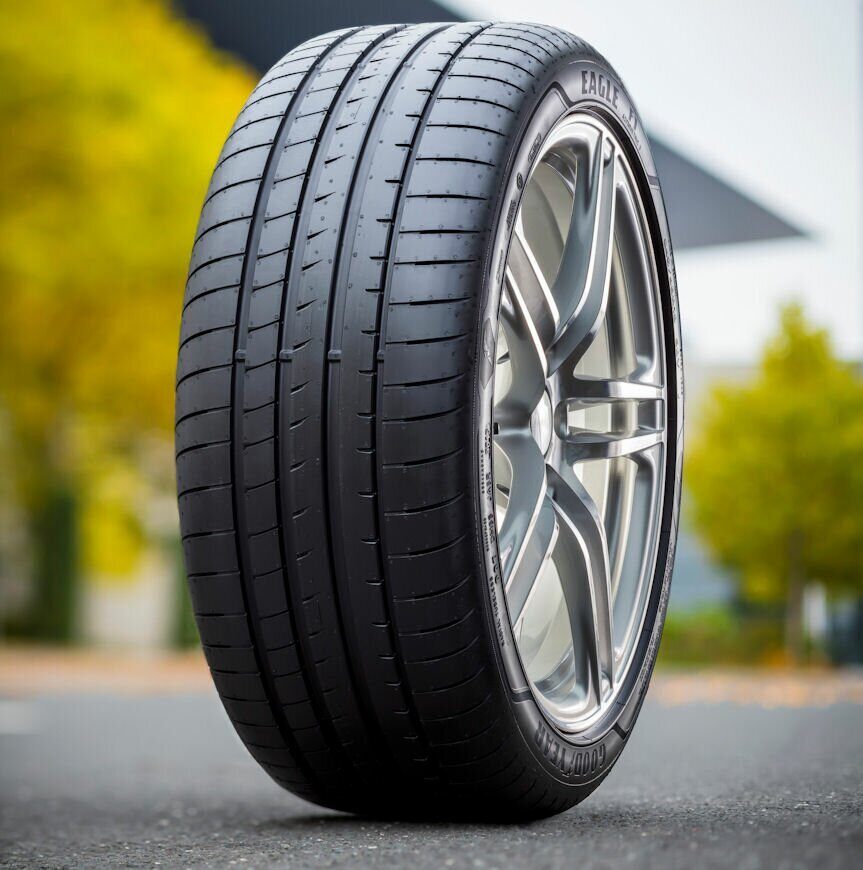 In addition, breakdowns are always sudden and occur on the go: the tire abruptly loses pressure and before the car comes to a complete stop it has time to make several revolutions “on the rims”, which breaks the cord and destroys the layers. It is not recommended to use such a weakened tire, even if it was possible to repair and strengthen the place of the rupture or cut, in the future.
In addition, breakdowns are always sudden and occur on the go: the tire abruptly loses pressure and before the car comes to a complete stop it has time to make several revolutions “on the rims”, which breaks the cord and destroys the layers. It is not recommended to use such a weakened tire, even if it was possible to repair and strengthen the place of the rupture or cut, in the future.
Related materials
8 tire storage rules - do you follow them all?
Incorrect storage of tires can cause cracks . The danger of such damage is that moisture enters the cord through cracks, which renders the frame unusable. In addition, air can escape through cracks. Unfortunately, cracks are not repairable, and tires with them will not last long: sooner or later they will deform, become covered with swellings due to rusted and torn cord or because of driving with pressure below the recommended one.
Blisters or bulges can appear on a tire for a variety of reasons - it always happens due to a broken cord or delamination in the carcass.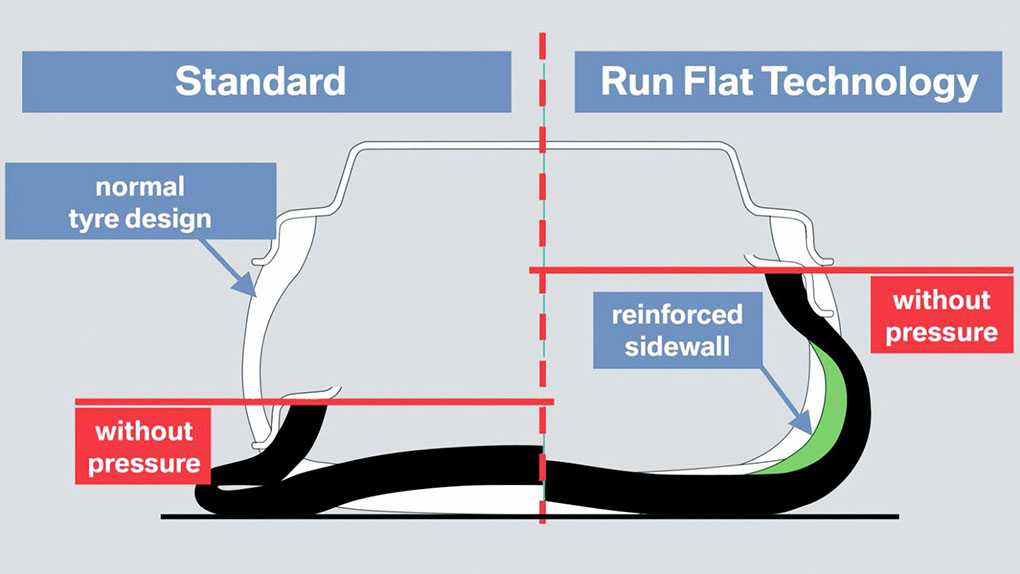 In the first case, an obstacle was hit and the impact broke the cord or the cord was cut through with a sharp object. In the second case, there is no damage on or near the hernia, which means that it appeared either due to a factory defect, or due to frequent driving with pressure below the recommended one. The danger of hernias is that they can explode at any moment and provoke a skid, which will lead to an accident. If there is nothing to replace a tire with a hernia, then it is better to rearrange it to the rear axle and drive very carefully. Like cracks, a hernia cannot be repaired. Sometimes small blisters resulting from impacts or cuts are reinforced with reinforced patches, but there is no guarantee that the tire will not explode. Therefore, tires with hernias are recommended to be replaced immediately.
In the first case, an obstacle was hit and the impact broke the cord or the cord was cut through with a sharp object. In the second case, there is no damage on or near the hernia, which means that it appeared either due to a factory defect, or due to frequent driving with pressure below the recommended one. The danger of hernias is that they can explode at any moment and provoke a skid, which will lead to an accident. If there is nothing to replace a tire with a hernia, then it is better to rearrange it to the rear axle and drive very carefully. Like cracks, a hernia cannot be repaired. Sometimes small blisters resulting from impacts or cuts are reinforced with reinforced patches, but there is no guarantee that the tire will not explode. Therefore, tires with hernias are recommended to be replaced immediately.
Related materials
Tire blackening - 6 ways to polish. Inexpensive!
Tire sidewalls can be damaged by rubbing against curbs or the asphalt edge when pulling over.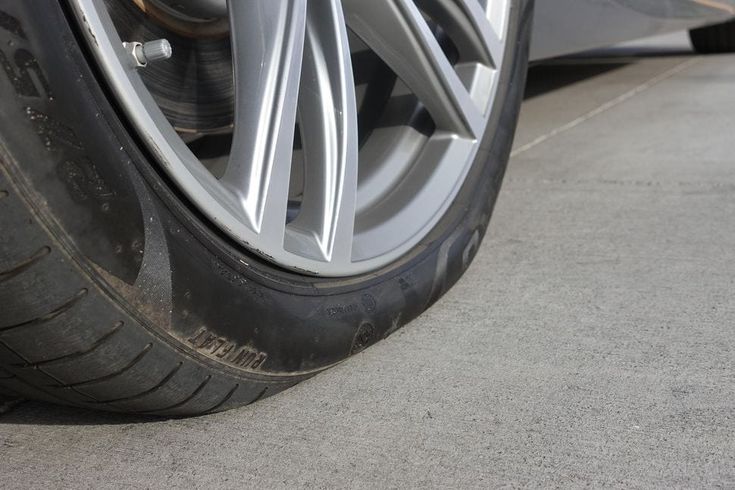 If you are prone to such a driving style, then it is recommended to inspect the inner and outer sidewalls from time to time and, if abrasion is found, swap the wheels in order to prevent the cord from being exposed - the rubber thickness on the sidewalls is small (1.5–3 mm), and it can be rubbed to the frame very quickly.
If you are prone to such a driving style, then it is recommended to inspect the inner and outer sidewalls from time to time and, if abrasion is found, swap the wheels in order to prevent the cord from being exposed - the rubber thickness on the sidewalls is small (1.5–3 mm), and it can be rubbed to the frame very quickly.
Often the cause of tire damage can be poor-quality tire fitting , during which the bead ring was damaged. In this case, the tire loses its geometry and “sits” crookedly on the disk - it writes out “eights” during rotation, and lateral vibration appears during the ride. It is impossible to repair such a tire - you need to replace it with a serviceable one as soon as possible before it damages the suspension: rods, hubs and bearings.
You can find out whether you are using tires correctly and what invisible damage they have received by the characteristic wear of the tread, the varieties of which are collected in the table for convenience:
Double side shoulder wear
Driving with lower than recommended tire pressure.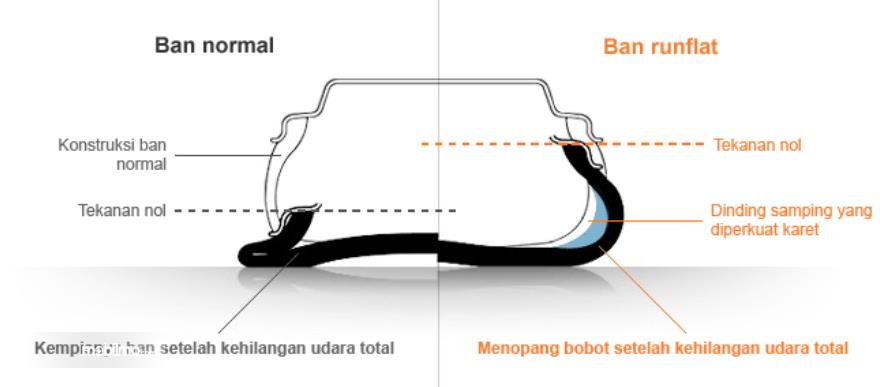
Inflate the tires to the pressure recommended by the automaker (a plate with recommendations is attached in the driver's door opening) and find the cause of the fall: puncture, cracks, hernia, nipple, rust on the disc rim in the place where the tire fits, etc.
Center wear
Tire pressure too high.
Reduce the pressure to the recommended (indicated on the tablet in the driver's doorway)
In the form of rings and furrows
can be found on trailers or rear wheels of pickups and vans due to vibrations and vibrations and vibrations due to vibrations and vibrations bouncing at high speeds.
Changing wheels on a loaded axle to equalize wear, driving with a heavier load.
Chipped wear with cuts
Frequent wheel spin on rocky surfaces.
Move the wheels to a non-driving axle, use the gas pedal more carefully when starting to move.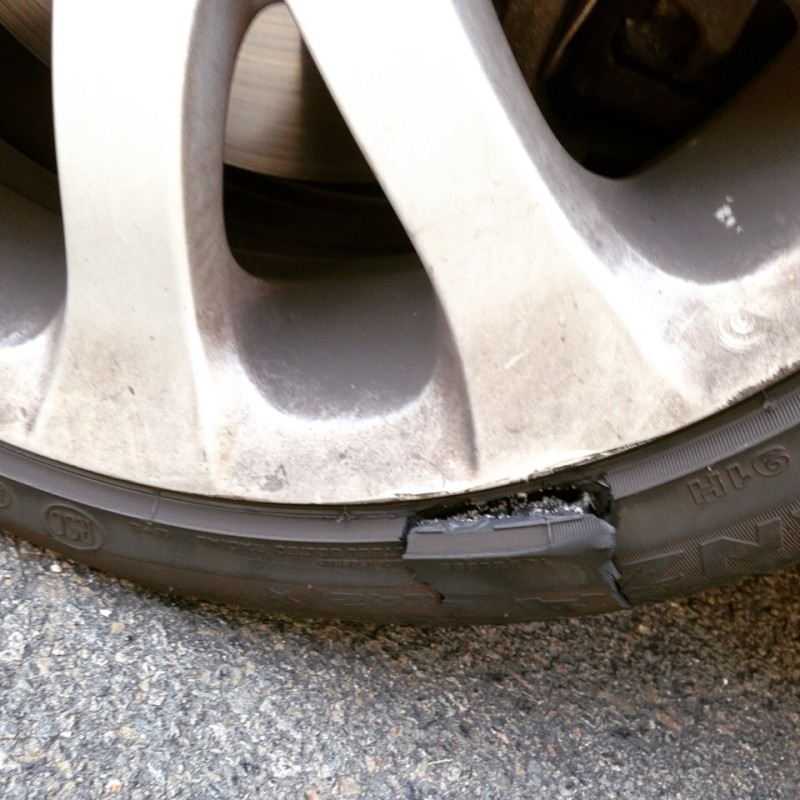
Photo: Petr Urbanek / Unsplash
Our new video
Consumption 2-3 l/100 km! Test of the most economical UAZ
Test of the earliest VAZ-2103 from the surviving
Test of a new crossover. Again "Chinese"? Not quite
Did you like the note? Subscribe and you will always be in the know!
Driving on Yandex.Zen
News smi2.ru
In this article, we will talk about what provides contact between the car and the road, i.e. about tires.
When it comes to the longevity of automotive parts, tires are definitely one of the components that needs to be checked regularly. And all because their condition affects fuel economy, handling and safety. You don't have to search diligently for information about them, because as per the requirements, it is left right on the sidewall! The only thing you won't find is how long a tire will last, but it's not easy to predict how long a tire will last.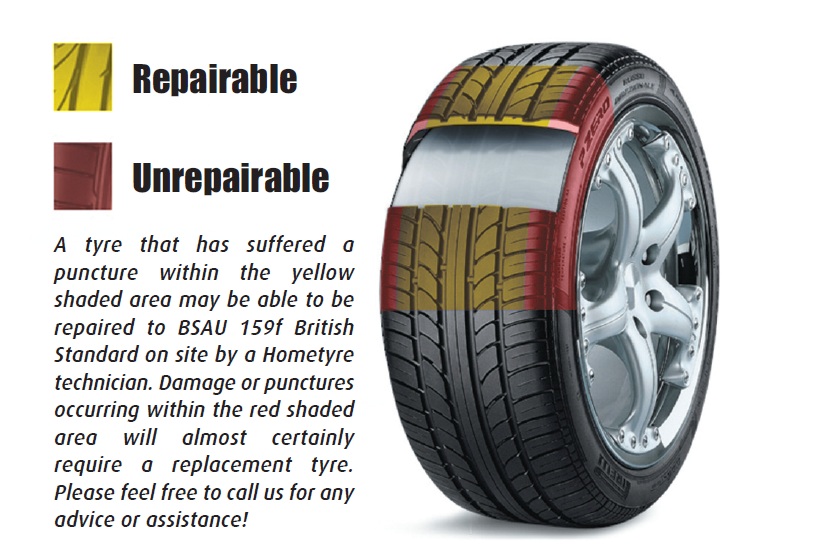
Factors Affecting Tire Longevity
In the movies, everything looks very cool - smoke from under the wheels, drifting and squealing under heavy braking .... But these are already quite extreme measures to doom your tires to premature wear. Even if you don't drive like in Hollywood movie chase scenes, some driving habits can kill your tires. By the appearance of tires, you can judge your driving style, the roads you drive on, and even the condition of other parts and systems of the car. The following are factors that affect tire life:
One specialist from the National Highway Traffic Safety Administration shared some of the secrets to the “longevity” of tires:
While automakers and suppliers have found ways to test various parts for durability, tires remain something of a mystery.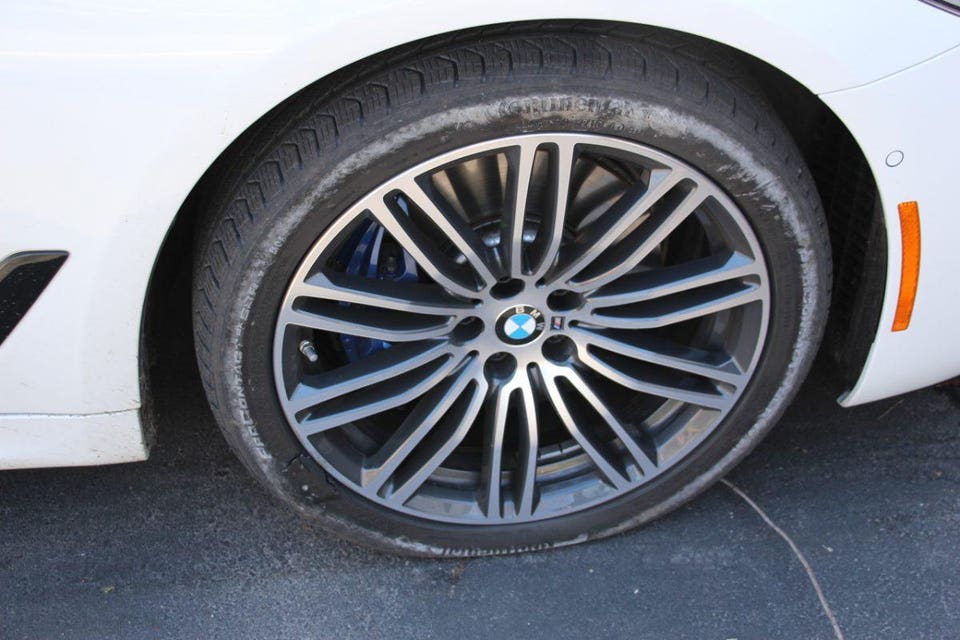 And it all depends on whether the driver kept the tire inflated for a long time before use (which wears it out prematurely), whether it was exposed to high temperatures, and so on.
And it all depends on whether the driver kept the tire inflated for a long time before use (which wears it out prematurely), whether it was exposed to high temperatures, and so on.
In the 1970s, tires had a different endurance, they were enough for 20,000 miles (32,187 km), but today they are completely different numbers - 80,000 miles (128,748 km). Naturally, the mileage may be different, it all depends on the driver. Save money and protect your tires.
Maintenance and maintenance
Want advice on how to save a few hundred dollars on car expenses? It's very simple - keep the tires under the right pressure. It is estimated that a properly inflated tire can result in 3.3 percent fuel savings, so you save about $2 per fill-up. Tire gauges are fairly inexpensive, easy to use, and can be purchased at any auto parts store.
Vehicles manufactured in the United States after September 1, 2007 have a built-in tire pressure monitoring system. But how do you know if the pressure is right? If you've ever looked at your car, you've probably paid attention to the information stickers pasted on the car's parts.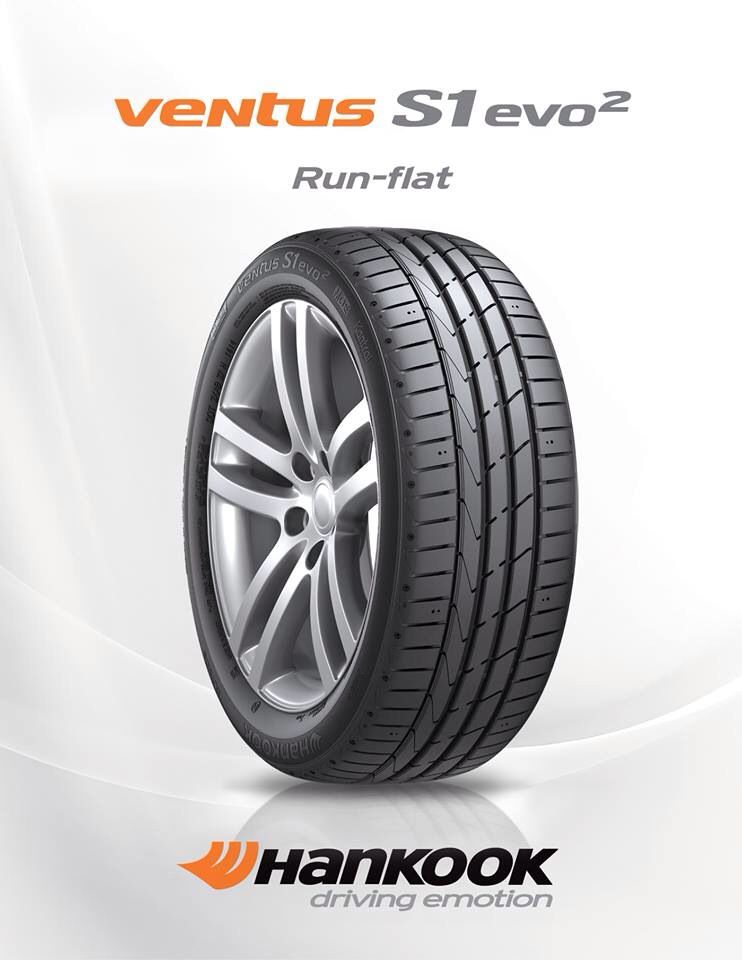 The government requires that this information be displayed in a prominent place so that owners or service personnel can find out about the technical requirements for repairs and replacement of various parts.
The government requires that this information be displayed in a prominent place so that owners or service personnel can find out about the technical requirements for repairs and replacement of various parts.
This kind of information exists on the tires. Stickers are usually placed on the front door jamb, gas filler flap or glove box, and all the details can be found in the owner's manual. Quality tires can cost a pretty penny, but it's worth the splurge as they will last longer. Keeping the tire under the right pressure is elementary. The maximum tire pressure is indicated in both metric systems - in kilopascals (kPa) and in pounds per square inch.
If the readings in the owner's manual or on the sticker differ from the real ones, follow the information on the tire. Don't forget to measure the pressure in your tires when they are "cold", i.e. before driving. While driving, the air in the tires heats up, causing them to expand. It is also necessary to inflate the tire to the recommended level, and not “to the eyeballs”, otherwise, overinflated tires can cause an accident.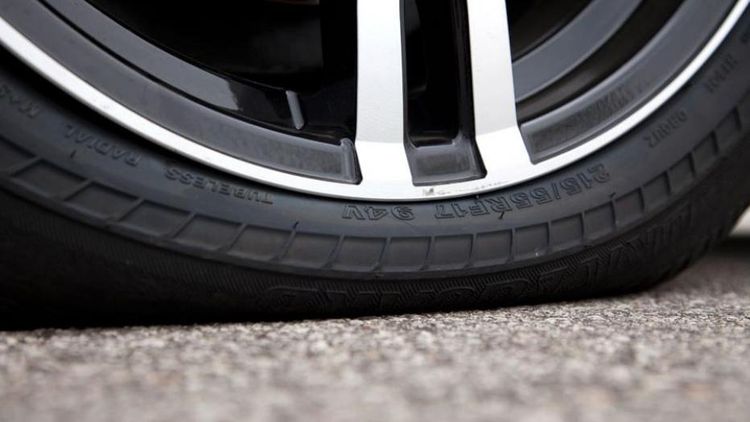
Also, it would be a good idea to swap tires every 5000 - 8000 miles (8047 - 12875 km), this will ensure uniform tire wear, which in turn will extend the life of the tires. If you know how to use a jack or stand, then the procedure is very simple. But at some point, changing tires won't be enough, you'll have to replace them.
Tire change
By the appearance of some parts, it is not clear whether it is time to replace them. But with regular inspection of the tires, you will notice when the tread has worn off, which means it's time to change the tires. To make sure that the protector is still “in working order”, you can conduct the following experiment: take a coin and move the edge up and down along the groove of the protector. If the edging (1.59 mm) is visible, the tread is worn. And of course, if you notice imperfections, such as deep cracks or bubbles on the tire, you should contact your tire supplier or auto repair shop.
Tires are usually replaced in sets of two or four, as different traction can lead to poor handling.